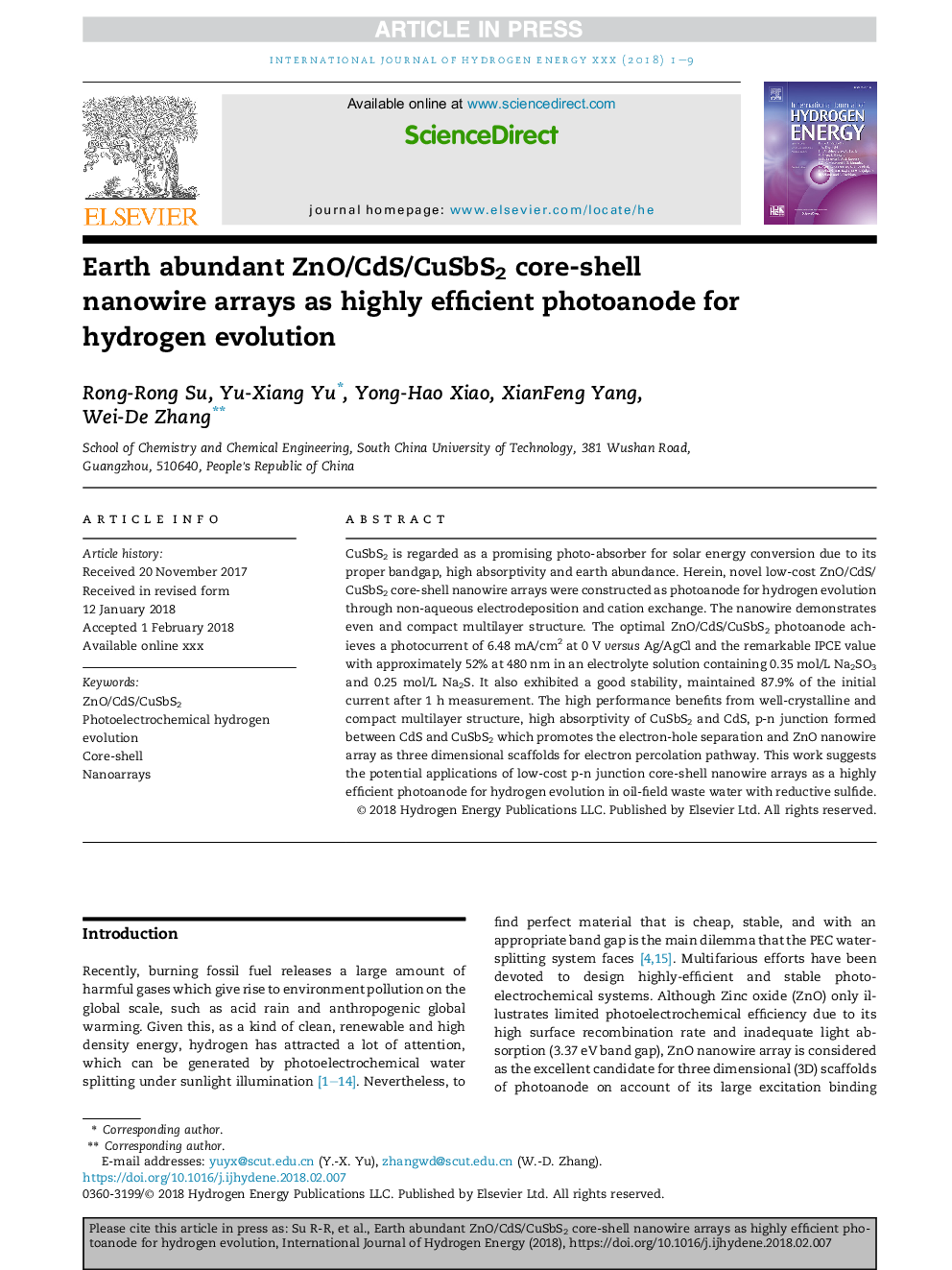| Article ID | Journal | Published Year | Pages | File Type |
|---|---|---|---|---|
| 7706950 | International Journal of Hydrogen Energy | 2018 | 9 Pages |
Abstract
CuSbS2 is regarded as a promising photo-absorber for solar energy conversion due to its proper bandgap, high absorptivity and earth abundance. Herein, novel low-cost ZnO/CdS/CuSbS2 core-shell nanowire arrays were constructed as photoanode for hydrogen evolution through non-aqueous electrodeposition and cation exchange. The nanowire demonstrates even and compact multilayer structure. The optimal ZnO/CdS/CuSbS2 photoanode achieves a photocurrent of 6.48Â mA/cm2 at 0Â V versus Ag/AgCl and the remarkable IPCE value with approximately 52% at 480Â nm in an electrolyte solution containing 0.35Â mol/L Na2SO3 and 0.25Â mol/L Na2S. It also exhibited a good stability, maintained 87.9% of the initial current after 1Â h measurement. The high performance benefits from well-crystalline and compact multilayer structure, high absorptivity of CuSbS2 and CdS, p-n junction formed between CdS and CuSbS2 which promotes the electron-hole separation and ZnO nanowire array as three dimensional scaffolds for electron percolation pathway. This work suggests the potential applications of low-cost p-n junction core-shell nanowire arrays as a highly efficient photoanode for hydrogen evolution in oil-field waste water with reductive sulfide.
Related Topics
Physical Sciences and Engineering
Chemistry
Electrochemistry
Authors
Rong-Rong Su, Yu-Xiang Yu, Yong-Hao Xiao, XianFeng Yang, Wei-De Zhang,
